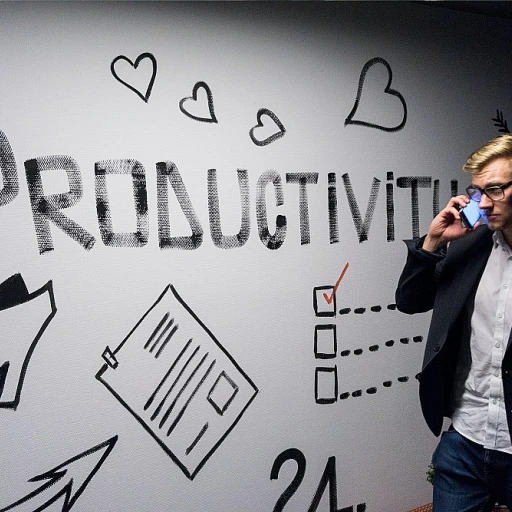
Defining First Order Change
Understanding First Order Change
First order change is an essential concept in corporate culture, reflecting adjustments that organizations make within their existing framework. Unlike second order changes that overhaul an entire system, first order changes involve modifications that enhance operations without transforming the core structure or identity of the organization. These changes are more like small pivots—incremental adaptations that address specific challenges or inefficiencies. In educational contexts, similar to corporate environments, first order changes could involve revising teaching methodologies or introducing new student learning tools while maintaining the school's overarching educational philosophy. This concept can be visualized in organizations implementing new communication protocols or upgrading existing technology systems to refine operations, thereby making the teaching-learning process more effective. Decision makers often initiate first order changes to solve immediate problems or to align with short-term goals. However, these reforms are not merely reactive; they are strategic moves to ensure that the organization remains agile and responsive to a rapidly evolving landscape. It's important to distinguish between first order and second order changes as both play critical roles in an organization’s long-term strategy and cultural evolution. First order changes, though seemingly minor, set the foundation for deeper, more transformative reforms, ensuring that organizations remain competitive without losing sight of their core mission. For those looking to delve deeper into how change management is navigated in specific sectors, such as non-profit organizations, exploring this article offers valuable insights.Identifying Triggers for First Order Change
Understanding What Sparks the Initial Change
In the realm of corporate culture, identifying the key triggers for first order change is essential for the smooth transformation of an organization’s dynamics. First order changes are often subtle and can seem as natural adjustments in response to minor issues within the existing systems.
Triggers can range from external pressures like evolving market demands to internal factors such as employee feedback and process inefficiencies. A well-established system of rules and protocols may suddenly become inadequate, prompting the need for adjustments that align with new objectives. It's akin to making small educational reforms in a university to enhance student learning without overhauling the entire educational structure.
Decision makers often initiate first order changes to address immediate problems without altering the core of the culture itself. For instance, a dip in employee satisfaction rates can lead an organization to revise its engagement strategies, bringing about change first in hopes of achieving quick improvements and long-term stability.
Students develop resilience and adaptability skills through small curricular changes in the center of their academic life, much like employees thrive through incremental cultural shifts in their work life. While these initial changes may seem minor, they pave the way for deeper, more extensive transformations.
It's essential to understand these triggers not just to solve short-term problems but also to lay the groundwork for potential second order changes, which might involve core shifts in the organization’s culture or values. For more insights on how adaptive leadership plays a role in initiating and managing these changes, further reading can provide valuable information.
Impact on Employee Engagement
Boosting Employee Engagement Through Change Initiatives
Understanding the dynamics of first order change in corporate culture is crucial when examining its impact on employee engagement. First order change refers to minor adjustments or modifications in an organization’s existing systems, processes, or rules, without altering its core values or structure. These changes can lead to improvements in organizational efficiency and employee satisfaction, but they require careful consideration. Employees often view organizational change with skepticism, fearing it might disrupt their current workflows or lead to increased workloads. However, a well-structured first order change can foster a positive environment that encourages employee engagement. By addressing specific problems or inefficiencies in the workplace, these changes can lead to a more supportive and productive setting. Here are several ways in which first order change can positively influence employee engagement:- Clarifying Roles and Expectations: By refining processes and clarifying roles, employees have a better understanding of their responsibilities and goals. This can enhance job satisfaction and motivate employees to align with the organization’s objectives.
- Facilitating Professional Development: Changes in the organization can present learning opportunities for employees. Whether introducing new technologies or refining current methods, such changes allow employees to develop new skills and adapt to new systems, akin to a student immersed in a dynamic educational environment.
- Boosting Motivation Through Recognition: Adjustments in feedback and appraisal systems can recognize employee efforts more effectively. Such recognition helps in reinforcing positive behaviors and drives motivation, much like a university student thriving under a robust support system.
- Promoting Open Communication: First order changes can reform communication channels within the organization. Transparent dialogues about change first lead to trust and open avenues for employees to voice concerns and suggest improvements, nurturing a culture of collaboration.
- Encouraging Work-Life Balance: By streamlining processes and reducing unnecessary bureaucracy, organizations can help employees maintain a healthy work-life balance, potentially reducing burnout and improving overall morale.
Leadership's Role in Facilitating Change
The Role of Effective Leadership in Steering Change
When an organization undergoes a first order change, effective leadership becomes crucial in navigating the new dynamics of the corporate environment. The role of leadership is not just about making decisions, but also about guiding the organization through the transition. Leaders act as facilitators for reforming systems, ensuring that the changes alleviate any immediate challenges without disrupting the core processes. Their influence lies in their ability to maintain stability while implementing necessary adjustments, akin to teaching students in an educational setting how to adapt to new information without dismantling their foundational skills. Leaders help to orient an organization towards effective change by:- Communicating the Vision: Clear communication from decision makers about the purpose and benefits of the change is essential. This helps in reducing resistance, building trust, and creating a sense of ownership among employees.
- Fostering a Learning Culture: Encouraging continuous student learning and development within the organization ensures that employees are prepared for change, enhancing their engagement and productivity in the short term and long term alike.
- Aligning Change with Core Values: By ensuring that the changes align with the organization’s core values and mission, leadership can minimize disruptions and uphold consistency across the corporate environment.
Challenges and Solutions
Overcoming Obstacles in Implementation
First-order changes in an organization often come with their own set of challenges. Despite their seemingly straightforward nature, these changes can disrupt the existing system and provoke resistance among employees. Understanding the dynamics of organizational culture is essential when mapping out strategies to navigate these challenges. One primary obstacle is employee pushback. Employees who have grown accustomed to one method of student learning or operational processes can find it difficult to adapt to even minor adjustments. Moreover, there is often a perception that changes, whether first or second order, are unnecessary, leading to skepticism and reluctance. Educating employees about the difference first-order changes can make, while encouraging their active participation, can help mitigate resistance. Leadership plays a critical role in managing these challenges. Decision-makers must communicate the reasons for the change clearly, emphasizing its benefits for both the short-term and long-term success of the organization. This involves highlighting how the adjustments align with the organization’s broader goals. By fostering an environment of transparency and open communication, leaders can help students develop a sense of trust and understanding, making the transition more seamless. Another challenge is the structural inertia within the organization. Despite good intentions, the existing rules and systems may hinder the reform process. To combat this, it’s essential to perform a thorough analysis of the current state and implement teaching strategies that allow for continuous improvement. Decision-makers should prioritize flexible systems that support change learning and innovation, essentially fostering an educational culture where adaptation becomes second nature. Ensuring ongoing support and resources is crucial. Organizations must allocate appropriate resources to training and development initiatives, helping employees adapt to new changes. This can include workshops, seminars, or even partnerships with educational institutions or universities to further enhance skills and competencies. By doing so, leaders not only facilitate the transition but also empower their workforce, thus bolstering employee engagement. While first-order changes may seem less daunting compared to second-order transformations, they still require a nuanced approach that encompasses all aspects of the organizational culture. Through proactive problem-solving and clear communication strategies, organizations can effectively navigate the complexities involved, ultimately leading to a more resilient and agile corporate environment.Case Studies of Successful First Order Changes
Exemplary Transformations in Corporate Settings
In various educational organizations, implementing first order change has proven effective in addressing issues related to student learning and reform. A notable example can be found in a university system that sought to enhance its teaching and student engagement methods. By focusing on refining existing processes rather than revamping entire systems, this institution successfully optimized its teaching learning frameworks.- Teaching Enhancements: The university introduced programs that strategically targeted student satisfaction and involvement. These initiatives included adjusting classroom dynamics, honing teaching methodologies, and incorporating feedback mechanisms for students to voice concerns. As a result, students develop stronger connections with educators, fostering an environment conducive to learning.
- Problem Resolution: A second case illustrates how an educational center tackled rules and bureaucratic hurdles that impeded effective communication among faculty and students. Through minor yet impactful changes to communication channels, the life of university staff and students improved, facilitating better problem-solving and coordination. These order changes helped ensure a smoother flow of information, ultimately enhancing the overall educational experience.













